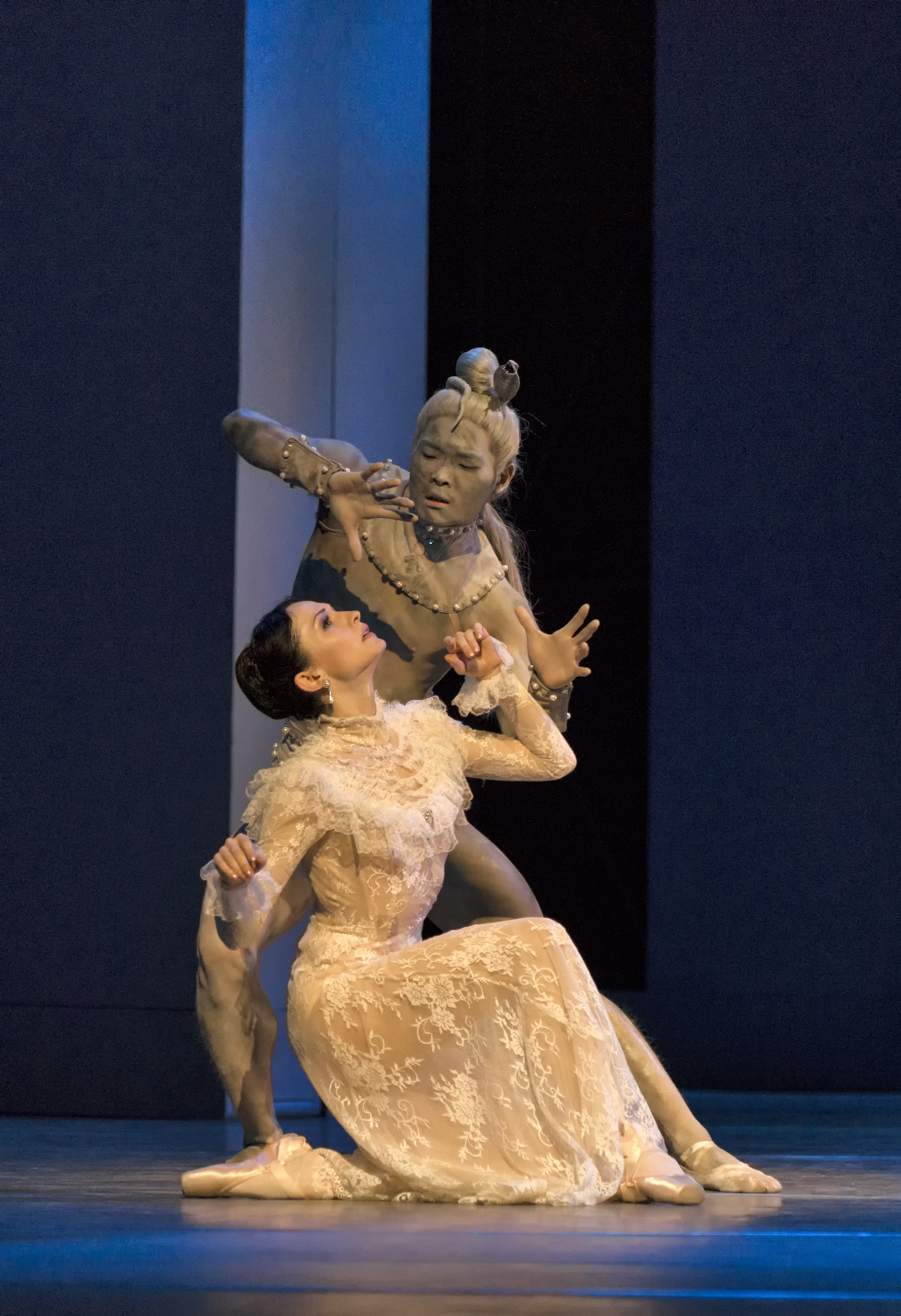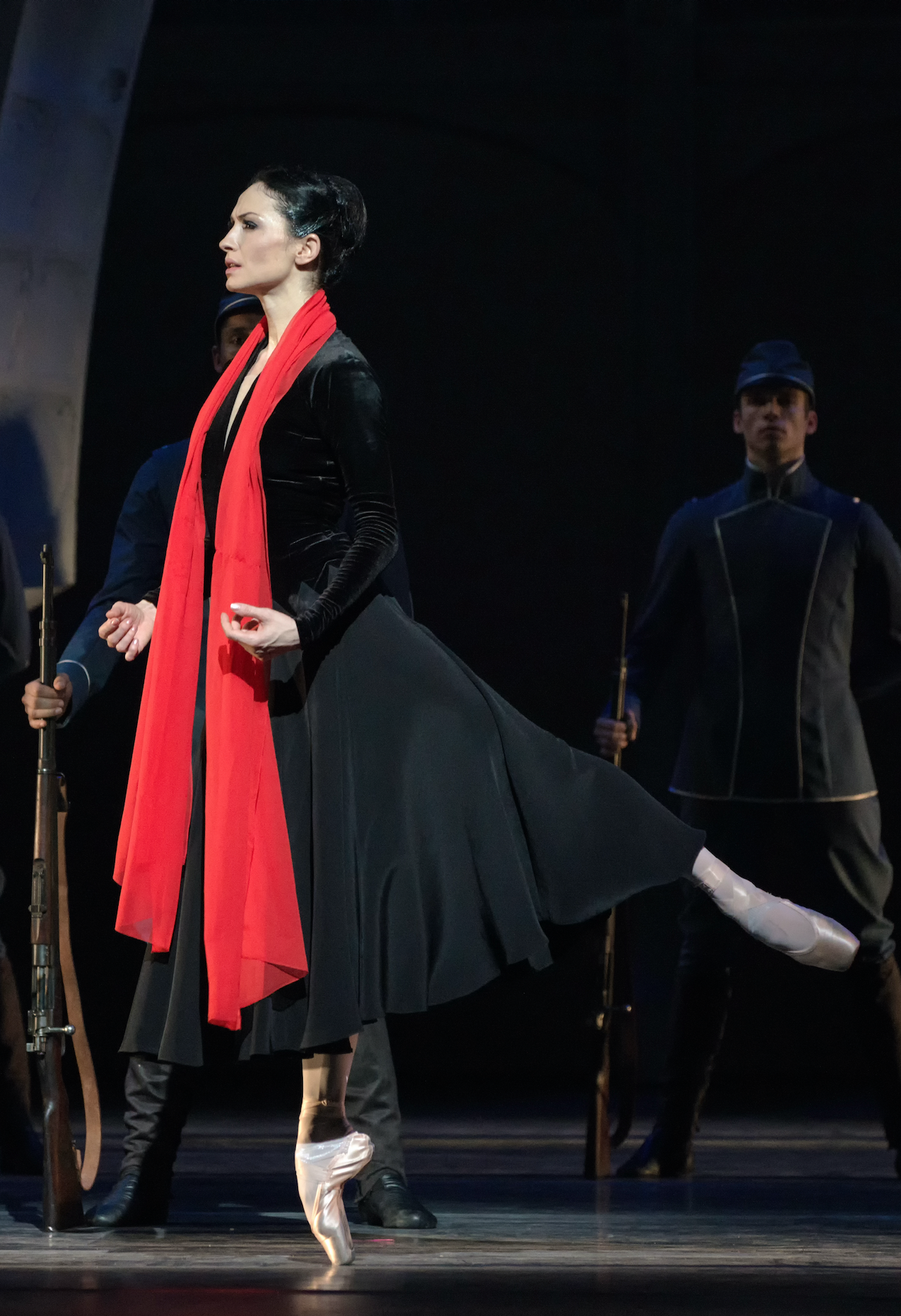‘After each setback, she rose from the ashes like a phoenix’
Anna Tsygankova about the role of Mata Hari
Principal dancer Anna Tsygankova remembers the creation process of Mata Hari, in 2015 and early 2016, as one of the most joyful periods in her career with Dutch National Ballet. “We were all on a creative high. It was fantastic to see how the production came together, step by step”.
“In the creation of the last scene, where the young Margaretha Zelle (danced by a pupil of the Dutch National Ballet Academy – ed.) runs across the stage waving a red scarf, everyone in the rehearsal studio got emotional. Ted and I both had tears in our eyes”.
Tsygankova says the scene was the culmination of a very intimate and creative nine-month rehearsal process, in between all the other ballet productions. “It was a wonderful time, in which Ted also left plenty of scope for our own insights and input”.
That encouraged Tsygankova to delve even deeper into Margaretha Zelle, alias Mata Hari. “I read a lot about her and did everything I could to get to know the character I would be interpreting. Although there are no films of how she danced, there are lots of photos, so I could get an impression of what she looked like when she performed on stage and also in her private life, with her husband and children. And Ted kept giving us information, telling us something new at each rehearsal. After that, it was up to me to flesh out the role and see how I could convey the story”.
SCAPEGOAT
Tsygankova has enormous admiration for Zelle’s strength. “She was an incredibly strong, brave, innovative woman. She was someone who lived according to her own rules, and after each setback rose from the ashes like a phoenix, reinventing herself, as it were. Right up to the last day of her life, she proudly held her head high and looked forwards. Like a true dancer. Was she actually a spy? It’s never been proved. I think myself that she was the victim of her situation, and that the men who judged her were looking for a scapegoat and abused her for that reason”.
Tsygankova says it doesn’t matter to her whether Mata Hari was a spy or not. “The way I imagine her isn’t based on the fact that she may have been a spy, but on her femininity. Whether she made the right or wrong decisions in her life is a question you can’t answer. However much empathy you feel for her and however you try to put yourself in her place, you can never truly feel what she experienced and endured, partly because of the totally different times she was living in. But just like Mata Hari, I’ve also been through difficult times. I know how it feels to have a broken heart, but also what it’s like to be extremely happy. I’m someone who lives life to the full and knows how rich and varied it is. I’ve also experienced how people you initially trusted can put things in a totally different light, so that the world suddenly turns upside down. I’ve drawn on all those experiences in interpreting my role”.


BECOMING A MOTHER CHANGES EVERYTHING
Now, five years after the premiere, her interpretation will be different to that of the first series of performances. “The main influencing factor is that I’ve become a mother in the meantime. Becoming a mother changes everything, especially the way you look at love and experience it. Now, I’ll be approaching the scenes where Mata Hari has lost both her children from a totally different perspective. And my idea of love relationships has changed too. Motherhood teaches me every day to focus my strength, qualities and emotions on the positive, constructive aspects of life, instead of concentrating on things that distract me or even destroy me. My son gives me so much joy. He’s now the centre of the universe. This is life you’ve created yourself, so all that relationship stuff and all that pain and heartache isn’t so important any more. This means that the relationships with my lovers in the performance, particularly near the end, will also be different. At first, I imagined that when she stood before the firing squad, Mata Hari saw all the men in her life pass before her eyes, but now I don’t think like that. Now, I want to portray her as a woman who stands above everything and above everyone who ever hurt her and did her injustice. As someone who has left behind all worldly cares, and departs this life enlightened and ennobled. I really hope that’s how she actually felt”.
THIN LINE BETWEEN REALITY AND FANTASY
In the rehearsals over the past weeks, says Tsygankova, the choreography came back almost immediately, as if the steps had been stored away in her subconscious in the five years since her last performance of Mata Hari.
Something Tsygankova is really happy about is that she now gets to coach a new Mata Hari: soloist Salome Leverashvili. “I love the fact that I can now pass on my experiences and my feelings about Mata Hari as a ballet mistress. It also means I can delve even deeper into the character myself. I’m analysing it more, now that I have to convey my role in words as well. In the rehearsals with Salome, I’m learning and realising even more how the tiniest details can make a huge difference. And the more you focus on the detail and on getting deeper into your role, the closer you get to the character and the more you come to love her. You hear the music of Mata Hari (which is fundamental to me in experiencing my role), you know the steps, and you’re almost automatically swept up in Margaretha’s world. The line between reality and fantasy, between the character I’m playing and who I actually am, then becomes a very thin one. Even more remarkable is that life on stage and offstage become virtually indistinguishable. That’s a magical experience for a dancer – the extent to which you identify with your role and how in two hours on stage you can experience the life of someone else (in this case Mata Hari) as if it were your own”.
Text: Astrid van Leeuwen